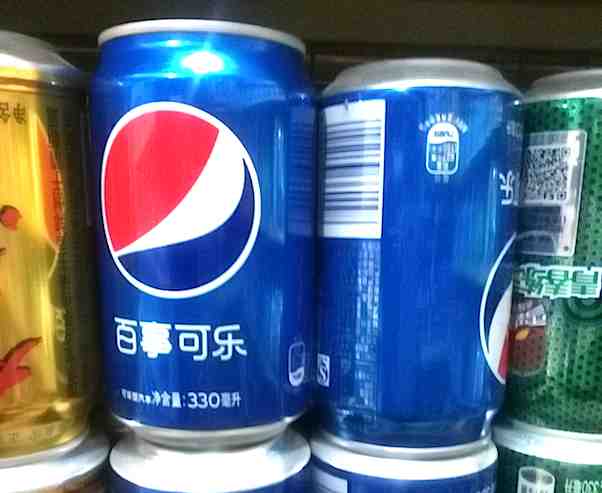
PepsiCo’s organizational structure addresses changing global market conditions. Global business expansion and consumer goods industry leadership aims are reflected in the company’s current corporate structure. These aims highlight PepsiCo’s mission statement and vision statement. This organizational structure defines the system and organizational design of business components, and how these components communicate to fulfill the mission and vision for the consumer goods business. The effectiveness of this company structure furthers the competitive advantages shown in the SWOT analysis of PepsiCo. This business case gives insights into how the organizational structure enables management and control over multinational operations for successful snack food and beverage products.
The characteristics of PepsiCo’s organizational structure are based on the company’s maximization of its control of international business growth while competing with The Coca-Cola Company, Keurig Dr Pepper, Unilever, and other firms. The Five Forces analysis of PepsiCo indicates aggressive competition and market saturation. The company’s business structure addresses this industry situation through divisions and a hierarchy for profitable brands in multiple consumer goods categories.
Features of PepsiCo’s Organizational Structure
PepsiCo’s structure reflects modifications to an originally hierarchical organizational structure. Mergers and acquisitions and global expansion in the consumer goods market have changed this company structure accordingly. The following are the main characteristics of PepsiCo’s structure:
- Market-based divisions
- Function-based corporate departments and offices
- Global hierarchy
Market-based Divisions. The most prominent feature of PepsiCo’s organizational structure is its market-based divisions. These divisions emphasize two variables: business and geography. In terms of business, PepsiCo’s company structure has divisions for food and for beverages. In terms of geography, the company has divisions for regional markets. The strategies and tactics used in PepsiCo’s marketing mix (4Ps) depend on these divisions of the company structure. The following are the market-based divisions in PepsiCo’s organizational structure:
- PepsiCo Beverages North America
- PepsiCo Foods North America
- PepsiCo Latin America
- Europe
- Asia Pacific, Australia, New Zealand, and China (APAC)
- Africa, Middle East, South Asia (AMESA)
- International Beverages
Function-based Corporate Departments and Offices. This characteristic of PepsiCo’s organizational structure refers to business functions. The company has global or corporate departments and offices for these functions. The objective of having these function-based groups is to ensure corporate control and rapid implementation of policies and strategies for the consumer goods business organization. For example, measures for higher productivity in PepsiCo’s operations management are implemented through the Operations department in collaboration with other departments. Also, PepsiCo’s organizational culture (corporate culture) is managed through the People department and related departments involving human resource management. An Executive or Chief heads each of these groups. The following are the main function-based corporate departments and offices of PepsiCo’s structure:
- Office of the CEO
- Sustainability
- Diversity, Equity, Inclusion
- PepsiCo International Beverages Franchise
- Finance
- Global Foodservice
- Legal and Corporate Secretary
- Controller
- eCommerce
- Strategy and Transformation
- Corporate Affairs
- Science
- Operations
- People
- Medical
- Life Sciences
- Consumer and Marketing
- Growth, International Foods
- Global Commercial
Global Hierarchy. PepsiCo’s business structure features a hierarchy that spans the global organization. This hierarchy supports monitoring, control, and governance at the global and corporate level. The consumer goods company maintains a considerable corporate hierarchy for top-down communications, monitoring, and control. This characteristic of the organizational structure provides a means for minimizing deviations from business policies and PepsiCo’s intensive growth strategies and generic competitive strategies for the international market for snack foods and drinks, like Pepsi soft drinks.
Advantages & Disadvantages of PepsiCo’s Structure
A primary advantage of PepsiCo’s organizational structure is the ability to focus on regional market needs through market-based divisions. This company structure also has the advantage of supporting global corporate control that unifies operations in the international consumer goods market. However, PepsiCo’s corporate structure has the disadvantage of limitations in organizational flexibility. For example, the company has a single global division for International Beverages. This structural characteristic reduces the company’s ability to immediately respond to market trends in its beverage business. Nonetheless, the divisions for regional markets (e.g., North America, APAC, and AMESA) ensure that this organizational structure supports some flexibility that matches variations among regional consumer goods markets linked to the industry trends discussed in the PESTEL/PESTLE analysis of PepsiCo. Subdividing some of these global or regional divisions can enhance the company’s responses to variations among consumer goods markets.
References
- About PepsiCo.
- Albert, D. (2024). What do you mean by organizational structure? Acknowledging and harmonizing differences and commonalities in three prominent perspectives. Journal of Organization Design, 13(1), 1-11.
- PepsiCo, Inc. – Form 10-K.
- PepsiCo, Inc. – Our Leadership.
- Wyland, R., Hanson-Rasmussen, N., & Clark, F. (2024). The structure-culture alignment activity: Aligning organizational structure elements with diversity, equity, and inclusion cultural values. Journal of Management Education, 48(1), 141-167.